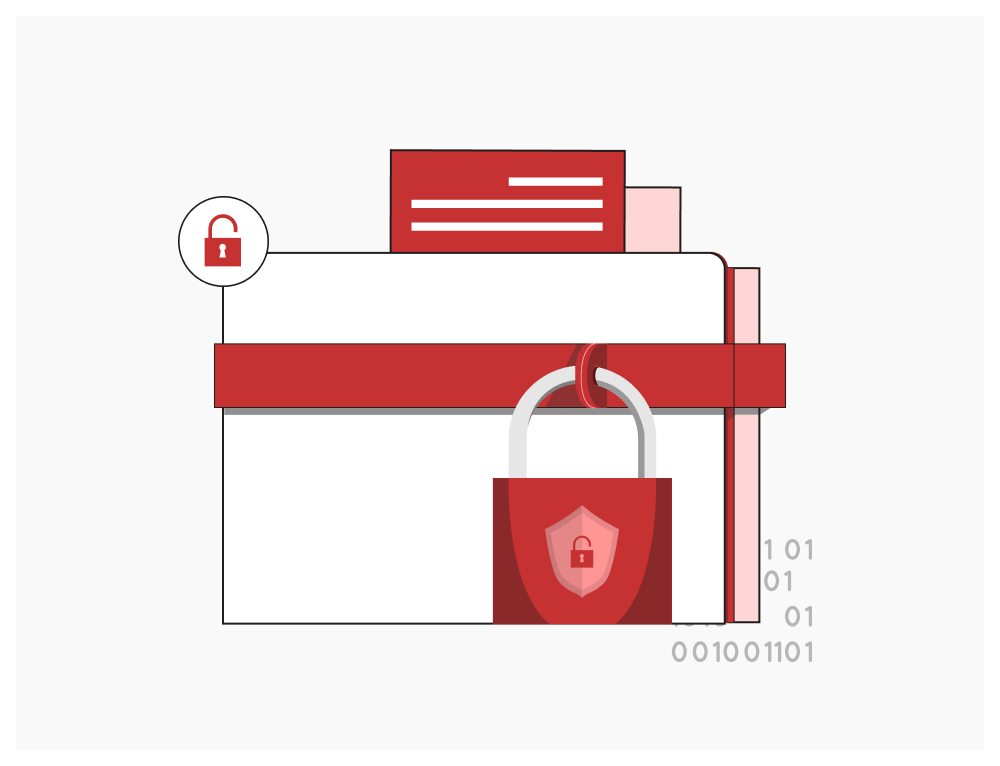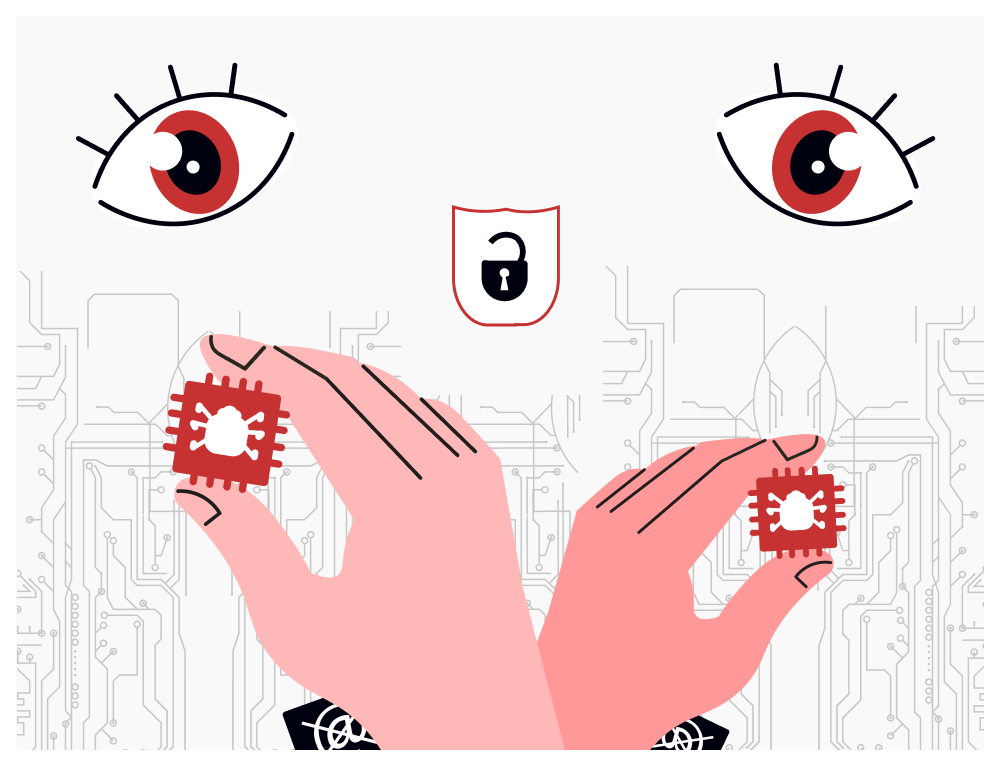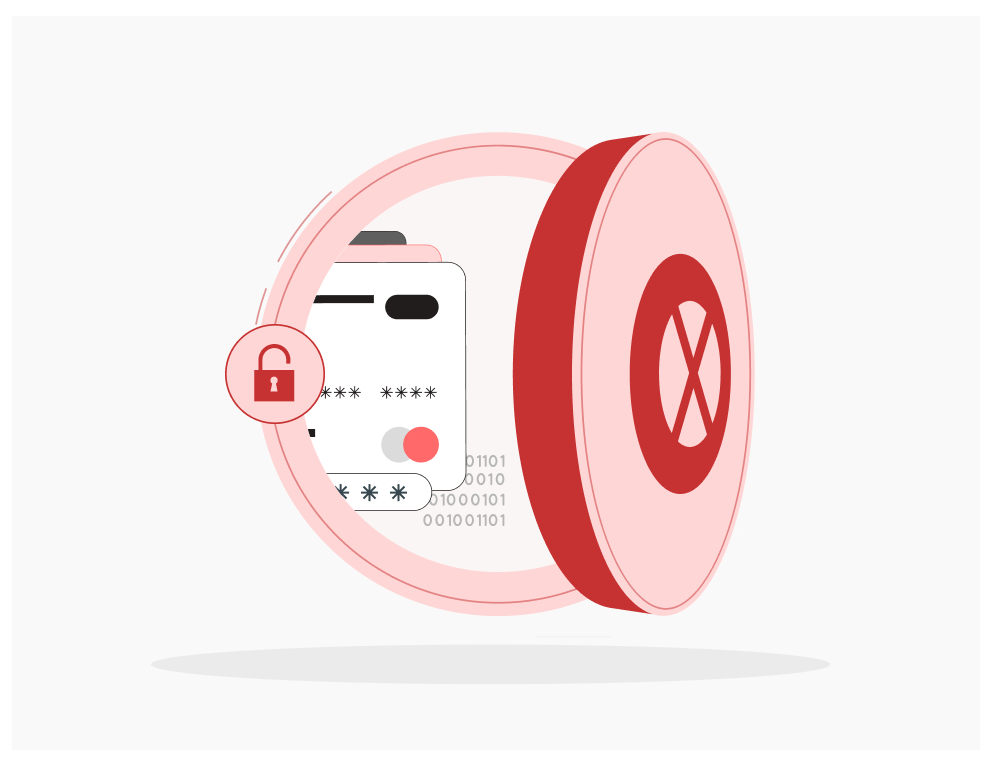Your message has been sent.
We’ll process your request and contact you back as soon as possible.
The form has been successfully submitted.
Please find further information in your mailbox.


The threat of financial fraud, cyberattacks, and other malicious activities has become a major concern for businesses around the world, particularly those in banking. As managing risk is essential to protect assets and maintain customer trust, it’s important to understand and keep up to date with the latest cyber security trends in banking and best practices that are specifically applicable to banks. With constant changes in technology, regulations, and security demands increasing overall complexity, it can be difficult keeping systems securely running while continuing meeting business goals.
To help equip banks better protect their networks against evolving threats – both internally or externally initiated – this blog article will take a closer look at current cybersecurity risks facing banks today as well as strategic solutions that institutions can leverage to defend against adversaries wanting access to personal data.
In 2020, cyber attacks ranked fifth in top risks, becoming the new norm across the private and public sectors. According to Security Magazine, there are over 2,200 attacks each day which breaks down to nearly 1 cyberattack every 39 seconds.
By 2025 these numbers will significantly increase, as cyberattacks on IoT alone are expected to double and cybercrime will cost companies around the world an estimated $10.5 trillion a year.
The COVID-19 pandemic initiated a major wave of cyberattacks in 2019. Because of uncertainty around working remotely and the digital protection of businesses, cybercrime has drastically increased by 600%. That new reality has forced all industries to adapt quickly and embrace new solutions that have resulted in a tightening of regulations for cybersecurity for financial services.

Is your cybersecurity infrastructure ready for the ever-changing threats?
Schedule a security assessment and receive expert recommendations for protecting your software.
The rapid advancement of technology has made maintaining a secure system increasingly important for banks. In today’s digital world, sensitive personal data such as banking information and passwords are at an even greater risk of being hacked or accessed by malicious actors. Keeping customer data safe is pivotal for a bank’s survival and reputation. To achieve this goal, banks must be constantly vigilant by implementing enhanced security measures that protect against security threats from surfing the internet or engaging in online banking activities. Banks should also ensure they are using the latest software updates and provide training to all employees on how to properly handle customer data and bank transactions safely. Ultimately, protecting customer data through strong cybersecurity is indispensable to guarantee safety in the banking sector and ensure the longevity of business operations.

In recent years, cybercrime has increased so much that it is already objectively considered the biggest threat to the financial sector. As hackers’ approaches and expertise have improved, it’s becoming more difficult to repel attacks consistently. Below are major cyber security threats in the banking sector.
Here, hackers create clone sites that can be easily accessed through third-party messaging services by any user. As there’s credible multi-factor authentication on the site and, in general, it looks like a real one, users won’t even realize how they’ve already given their credentials to hackers.
A DDoS attack uses a botnet – a collection of attached online appliances – to flood a target website with fake traffic. Unlike other cyber attacks, a DDoS attack does not attempt to compromise security. Instead, its goal is to deplete network, server, or application resources so they become unavailable to the target audience. A DDoS attack can also be used to mask other malicious activities and disable security devices, breaching the target’s security. It’s also interesting that during the pandemic, the number of DDoS attacks rose by 30% in the financial services industry.
As cybercriminals are getting more creative, data threats haven’t decreased over time. It’s no longer enough to simply protect data access points – data itself must be encrypted. IBM reported that the average cost of a data breach is $4.35 million. The price will surely increase in the future as cyberattacks happen every day, causing enormous damage to companies and users. However, robust encryption methods can reduce or fully eliminate these expenses.

Ransomware is used by cybercriminals to encrypt important data and keep its owners from gaining access to it unless they pay ransom. This cyberattack is a serious threat to banks; unfortunately, 90% of them have already been hit.
In the era of cryptocurrencies, fraudsters are particularly interested in finding weak points in the decentralized system. If those vulnerabilities exist, they can easily steal money from the trading system.
The practice of modifying digital documents and information is known as data manipulation. Cybercriminals infiltrate networks using any attack vector, gain access to software or applications, and change data. By manipulating data instead of stealing it, hackers can be more successful in creating disastrous consequences for organizations or individuals. It’s a sophisticated cyberattack, as it can take a long time before a user discovers that their sensitive and confidential information has been irreversibly altered.
Spoofing is a form of cyberattack where criminals disguise their identity as a trusted and known source in order to steal confidential information or money. Banks are under constant threat from spoofing attacks, which can have serious consequences for their customers and operations. Moreover, a man-in-the-middle attack is gaining momentum where a hacker intercepts communications between a customer and the bank, in order to gain access to personal data, divert payments, or even launch a denial of service attack. As such, it is essential that banks remain vigilant and take steps to protect themselves from these threats.
Did you know a DDoS attack can disrupt your operations and hide other threats?
Strengthen your bank’s defenses to mitigate overwhelming traffic and catch malware.
Financial institutions should follow FinTech regulations to maintain a strong security posture and prevent data breaches. Using these regulations, security leaders can evaluate their security postures and those of their vendors. Also, your organization can easily identify the processes and procedures needed to mitigate cybersecurity risks. Below are the three most common financial cybersecurity compliances in banking.
NIST has become the No.1 standard for evaluating cybersecurity, identifying security weaknesses, and complying with cybersecurity legislation even when compliance is not mandatory. There are 110 requirements developed by NIST that cover various aspects of an organization’s IT procedures, policies, and technology. These requirements cover access control, system configuration, and authentication methods. In addition, they define protocols for cybersecurity and incident response. Meeting each of these requirements ensures that the organization’s network, systems, and employees are efficiently prepared to manage any Controlled Unclassified Information (CUI) in a secure manner.
The Bank Secrecy Act / Anti-Money Laundering (BSA/AML) is a set of laws and regulations that are designed to help financial institutions detect and prevent money laundering and the financing of terrorism. BSA/AML requirements are critical for banks, credit unions, and other financial institutions as they help protect their customers from fraud, theft, and other illegal activities. These regulations also provide regulators with the necessary tools to ensure that banks follow the rules set by the government. As such, BSA/AML compliance is essential for any institution that deals with money or assets.

PCI DSS is a set of security standards designed to protect customer data and payment information from unauthorized access, use, or disclosure. Compliance with the PCI DSS is mandatory for any company that processes, stores, or transmits credit card information. By adhering to these standards, companies can ensure the integrity of their customer data and protect it from cyber threats.
The General Data Protection Regulation (EU-GDPR) is a security framework designed to protect citizens’ personal information. Any enterprise that processes EU citizens’ private data, whether manually or automatically, must comply with the GDPR. This regulation highlights a number of security guidelines for data processors and data controllers in order to ensure the security of all user data throughout its lifecycle.
The globally recognized standard ISO/IEC 27001 minimizes security risks and safeguards information systems. It is a set of internationally recognized security policies and procedures designed to help companies improve their security postures in a wide range of industries.
Due to its reputation as an international standard for cyber security resilience and data protection, financial institutions that wish to exhibit their outstanding cybersecurity procedures to stakeholders should obtain ISO/IEC 27001 accreditation.
The security of an organization’s data is a major concern. For banks storing huge amounts of personal data and transaction lists, cybersecurity solutions and procedures are critical. Today the importance of cyber security in banking cannot be ignored. As a result of technological development, cyberattacks on banking systems have become more common.
Innowise is one of the leading software development companies that specializes in developing banking software with a focus on cybersecurity. By leveraging the latest technologies, we are able to provide organizations with innovative solutions tailored to their individual business requirements. Innowise uses its extensive experience in the industry and problem-solving capabilities to ensure superior protection against cyber threats and data breaches. Ultimately, Innowise’s expertise in banking software development helps companies prevent cyber threats by providing secure systems that prioritize safety and usability.

Rate this article:
4.8/5 (45 reviews)











Your message has been sent.
We’ll process your request and contact you back as soon as possible.

By signing up you agree to our Privacy Policy, including the use of cookies and transfer of your personal information.